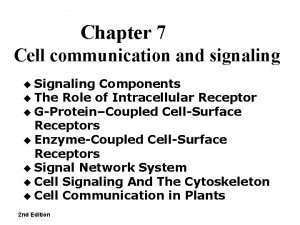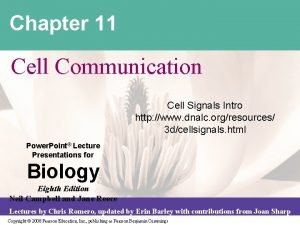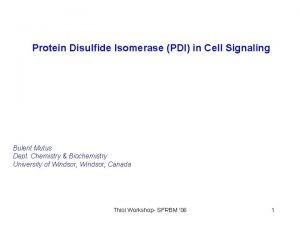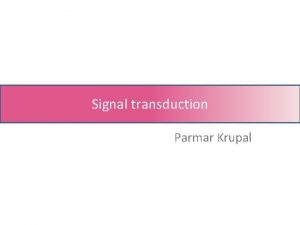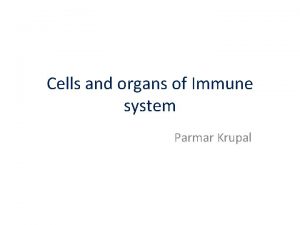Cell Signaling Parmar Krupal Four forms of intercellular









- Slides: 9

Cell Signaling Parmar Krupal

Four forms of intercellular signaling.

(A) Contact-dependent signaling requires cells to be in direct membrane– membrane contact. Contact dependent signaling is especially important during development and in immune responses.

signaling cells secrete signal molecules into the extracellular fluid. Often, the secreted molecules are local mediators, which act only on cells in the local environment of the signaling cell. This is called paracrine signaling cells may also produce signals that they themselves respond to: this is referred to as (B) Paracrine signaling depends on local autocrine signaling. mediators that are released into the Cancer cells, for example, often produce extracellular space and act on neighboring cells. extracellular signals that stimulate their own survival and proliferation.

When a neuron is activated by stimuli from other nerve cells, it sends electrical impulses (action potentials) rapidly along its axon; when the impulse reaches the synapse at the end of the axon, it triggers secretion of a chemical signal that acts as a neurotransmitter. (C) Synaptic signaling is performed by neurons that transmit signals electrically along their axons and release neurotransmitters at synapses, which are often located far away from the neuronal cell body.

(D) Endocrine signaling depends on endocrine cells, which secrete hormones into the bloodstream for distribution throughout the body. Many of the same types of signaling molecules are used in paracrine, synaptic, and endocrine signaling; the crucial differences lie in the speed and selectivity with which the signals are delivered to their targets.


Thank you

